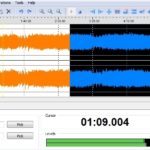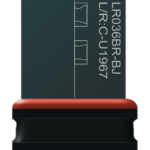In computer programming, a file signature is a distinctive identifying number that appears at the start of every file. This number identifies file type and provides data about the information stored within it. A file signature, which includes all of the above characteristics, may be useful in verifying a document against computer malware.
Table of Contents
Why Is a File Signature Important?
How often have you been working on a project and wanted to send it to someone only to discover that you forgot to add your name? Or forgotten to include the date when the document was created? If you’re like most people, this happens more than once.
The problem is that in today’s digital world, files don’t come with a “signature” – a set of information that lets other people know who made them and when they were created. Yet there are ways around this problem: file-name extensions such as .docx or .pdf can serve as an informal signature; or if you create your own application, such as Microsoft Word or Adobe Photoshop, then it will automatically save with a unique identifier called a File Signature (also known as a File ID, or by the file extension .fs).
File signatures are an important part of protecting your intellectual property. If you create something on one computer, it will have a certain File Signature. If you copy that file to another computer, it will have a different File Signature – so if someone copies your files without your permission, you can tell exactly which files to track down.
How to Define a File Signature?
Even though there is no real standard for creating File Signatures, each program adds its own unique flavor of identifying information into the file signature field. For example, Microsoft Word 2013 creates two sets of information for each new document:
- A randomly generated number called a Document ID and
- The time and date when the file was created. Adobe Photoshop CS, on the other hand, names each new document using the time and date when it was created as well as a serial number that is automatically incremented with each new file.
In addition to marking your files as yours, there are some other reasons why having a File Signature is useful: for example, you can verify whether or not a file has been altered from its original state by checking its File Signature against the one you made or saved originally. If they match, this means that no one has messed around with your files.
File signatures should be considered valuable intellectual property – if someone makes changes to an image you have created without your permission, then they do not have the right to distribute those images under their signature, because it is your intellectual property.
File Signatures can also be used to verify a file’s authenticity or prove that a suspect file was created by a specific program at a specific time and location–and not downloaded from the internet!
In summary, while no standards exist for creating File Signatures, every application creates unique information within its interface that you can use to track files over time and across computers. So remember! When you make something–anything–add your name. The more information about yourself embedded into your work, the better protected you will be from copyright infringement and other nasty things down the line.





